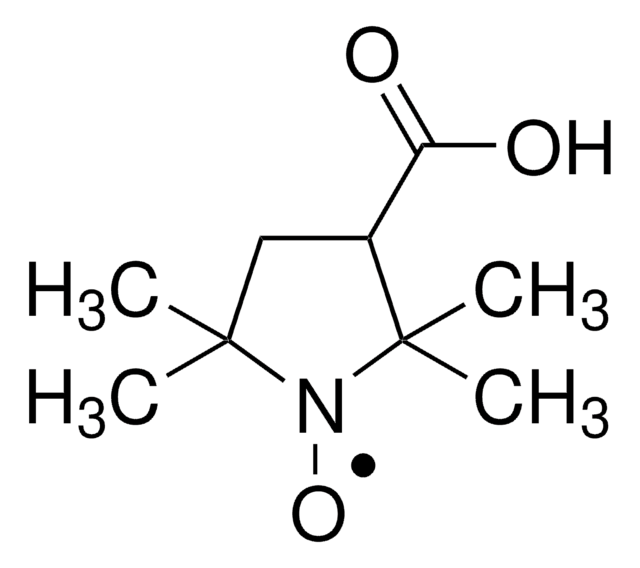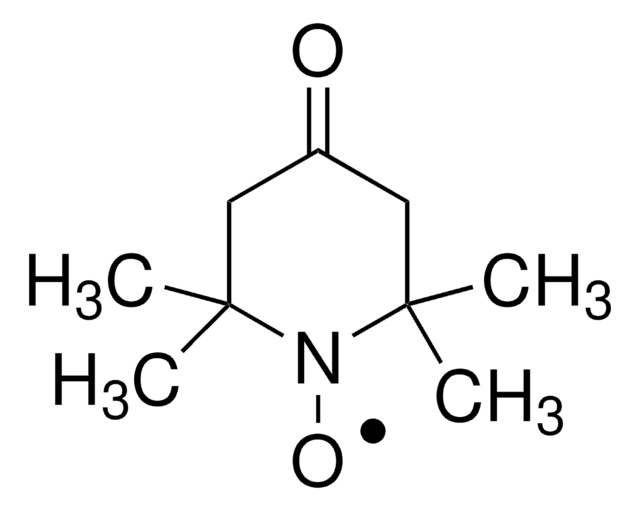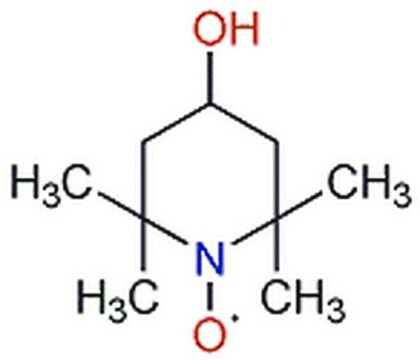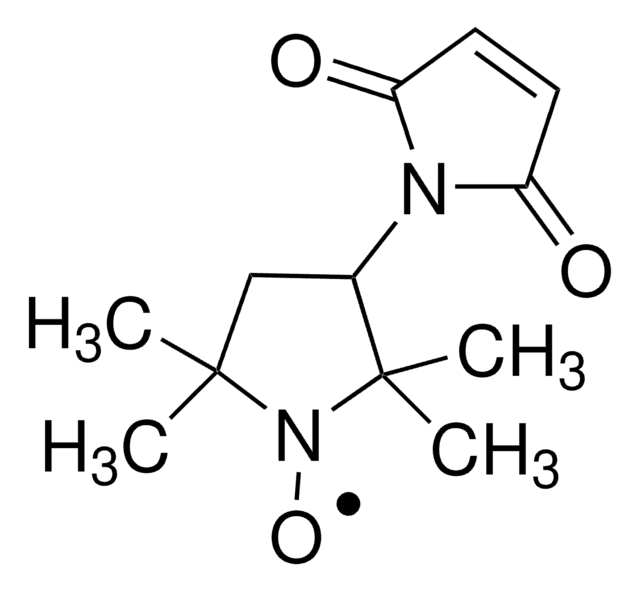382000
4-Carboxy-TEMPO, free radical
97%
Sinónimos:
4-Carboxy-2,2,6,6-tetramethylpiperidine 1-oxyl, 4-Carboxy-2,2,6,6-tetramethylpiperidinyloxy, free radical, 4-Carboxy-TEMPO
About This Item
Productos recomendados
Análisis
97%
mp
185-189 °C (lit.)
temp. de almacenamiento
2-8°C
cadena SMILES
CC1(C)CC(CC(C)(C)N1[O])C(O)=O
InChI
1S/C10H18NO3/c1-9(2)5-7(8(12)13)6-10(3,4)11(9)14/h7H,5-6H2,1-4H3,(H,12,13)
Clave InChI
CYQGCJQJIOARKD-UHFFFAOYSA-N
¿Está buscando productos similares? Visita Guía de comparación de productos
Descripción general
Aplicación
Palabra de señalización
Warning
Frases de peligro
Consejos de prudencia
Clasificaciones de peligro
Eye Irrit. 2 - Skin Irrit. 2 - STOT SE 3
Órganos de actuación
Respiratory system
Código de clase de almacenamiento
11 - Combustible Solids
Clase de riesgo para el agua (WGK)
WGK 3
Punto de inflamabilidad (°F)
Not applicable
Punto de inflamabilidad (°C)
Not applicable
Equipo de protección personal
dust mask type N95 (US), Eyeshields, Gloves
Certificados de análisis (COA)
Busque Certificados de análisis (COA) introduciendo el número de lote del producto. Los números de lote se encuentran en la etiqueta del producto después de las palabras «Lot» o «Batch»
¿Ya tiene este producto?
Encuentre la documentación para los productos que ha comprado recientemente en la Biblioteca de documentos.
Los clientes también vieron
Artículos
TEMPO (2,2,6,6-Tetramethylpiperidinyloxy or 2,2,6,6-Tetramethylpiperidine 1-oxyl) and its derivatives are stable nitroxy radicals used as catalysts in organic oxidation reactions. TEMPO was discovered by Lebedev and Kazarnovskii in 1960. The stable free radical nature of TEMPO is due to the presence of bulky substituent groups, which hinder the reaction of the free radical with other molecules.
Nuestro equipo de científicos tiene experiencia en todas las áreas de investigación: Ciencias de la vida, Ciencia de los materiales, Síntesis química, Cromatografía, Analítica y muchas otras.
Póngase en contacto con el Servicio técnico









